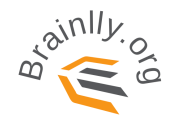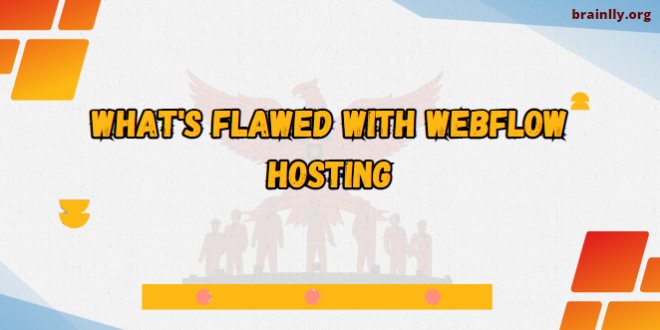Webflow has gained popularity as a website builder and hosting platform, offering an intuitive interface and promising seamless website creation. However, despite its strengths, there are certain flaws with Webflow hosting that users should be aware of. In this article, we will delve into the drawbacks of Webflow hosting and explore potential alternatives.

1. Limited Customization Options
While Webflow provides a range of templates and design options, its customization capabilities are somewhat restricted. Advanced users who seek complete control over their website’s code may find the platform limiting.
2. Costly Pricing Plans
Webflow hosting is known for its steep pricing plans, especially when compared to other hosting providers. For small businesses or individuals on a tight budget, these costs can be prohibitive.
3. Steep Learning Curve
Despite its user-friendly interface, Webflow has a learning curve that may be challenging for beginners. Users with limited technical knowledge may struggle to navigate the platform and make the most of its features.
4. Dependency on Webflow Platform
When you choose Webflow hosting, you become dependent on the platform for your website’s functionality. This means that if you decide to switch to another hosting provider, you may encounter difficulties in migrating your website and preserving its functionality.
5. Limited Ecommerce Features
For users looking to build an online store, Webflow’s ecommerce capabilities may fall short. The platform lacks certain advanced features commonly found in dedicated ecommerce platforms.
6. Lack of Plugin Ecosystem
Webflow has a limited selection of plugins and integrations compared to other website builders. This can be a hindrance for users who rely on third-party tools and services to enhance their website’s functionality.
7. Limited Scalability
Webflow hosting may not be the ideal choice for websites with high traffic or rapid growth. The platform’s scalability options are limited, which can lead to performance issues when your website experiences a surge in visitors.
8. Lack of Server-Side Control
Webflow’s hosting platform does not provide server-side control, limiting your ability to fine-tune server configurations and optimize website performance. This may be a concern for users with specific hosting requirements.
9. SEO Limitations
While Webflow offers some SEO features, it lacks certain advanced functionalities that can help boost your website’s visibility in search engine rankings. This can be a drawback for users who prioritize search engine optimization.
10. Reliability Concerns
Webflow hosting has faced occasional uptime and reliability issues in the past. Downtime can negatively impact user experience and potentially lead to lost business opportunities.
11. Limited Support Options
Webflow’s support options are limited, primarily relying on community forums and email support. Users seeking immediate assistance or real-time support may find this aspect lacking.
12. Data Ownership
When hosting your website on Webflow, you must be aware that your data is stored on their servers. This can raise concerns about data ownership and control, especially for businesses that deal with sensitive customer information.
13. Restrictive Platform Integration
Webflow may not seamlessly integrate with certain third-party platforms and services, limiting your ability to connect your website with your preferred tools and systems.
14. Performance Optimization Challenges
Webflow’s hosting platform may present challenges when it comes to performance optimization. Advanced optimization techniques and fine-grained control over caching and server settings are not readily available.
15. Limited Database Functionality
Webflow’s hosting is primarily designed for static websites, and its database functionality is limited. If your website relies heavily on dynamic content or database-driven interactions, you may encounter limitations with Webflow hosting.
16. Inconsistent Updates and Features
Webflow’s release of updates and new features can be inconsistent at times, which may leave users waiting for crucial enhancements or bug fixes.
17. Difficulty in Exporting Code
If you decide to migrate your website away from Webflow, exporting your website’s code and transferring it to another platform may be a complex process. This can be a disadvantage for users who wish to retain full control over their website.
18. Internationalization Limitations
Webflow’s support for internationalization and multilingual websites is limited. If you plan to create a website with multiple language options, you may face challenges with the platform’s localization capabilities.
19. Lack of Server Access
Webflow’s hosting platform does not grant users direct access to the server environment, limiting the ability to perform advanced configurations or install specific server-side software.
20. Conclusion
The flaws with Webflow hosting outlined in this article highlight some of the limitations and concerns that users should consider before opting for this platform. While Webflow offers a user-friendly interface and design capabilities, its pricing, customization restrictions, scalability, and other issues may make alternative hosting providers more suitable for certain users’ needs. It’s essential to thoroughly evaluate your requirements and explore different options to find the hosting solution that best aligns with your goals.
Goodbye for now, and we hope you found this article insightful and helpful in making an informed decision about your website hosting!
 Brainlly A collection of the latest news and information from various trusted sources
Brainlly A collection of the latest news and information from various trusted sources
